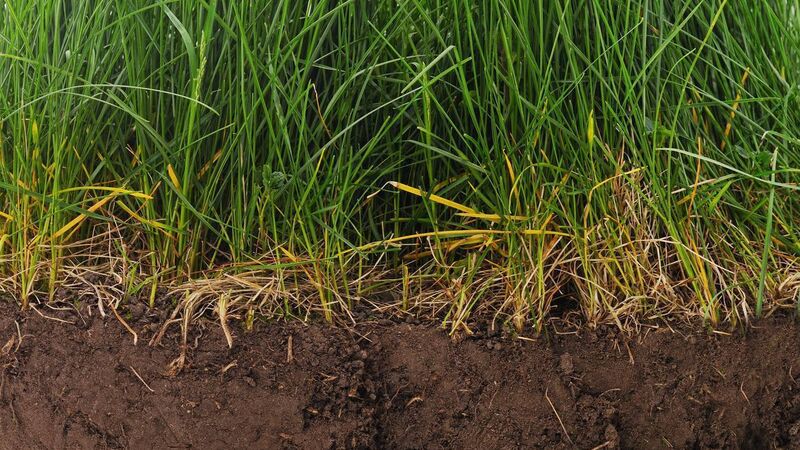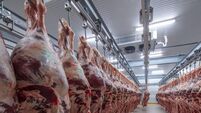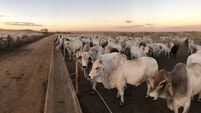Brian Reidy: Grass growth badly needs to take off

If we take the recent frosts and the moisture deficit, it's hard for soil temperatures to rise and hence grass growth is struggling.
We badly need grass growth to take off soon. Growth is well below 30kg/ha/day at present.
Soil temperatures need to push beyond the 10C mark before we see a significant jump in growth.
Believe it or not, we also have a slight moisture deficit where most of the country is short in the region of an inch of rain. Many have commented that ground is very hard. So if we take the recent frosts and the moisture deficit, it's hard for soil temperatures to rise and hence grass growth is struggling.
Hopefully, as the week moves on, we will have gotten the rain followed by the forecasted rise in air temperatures.
One wonders, with the conditions I have described and less than ideal growth, how the experts have been pushing producers to have 70 units of nitrogen per acre applied, with the current price of it!
While growth will hopefully improve soon based on the weather forecast, some will still be looking at a slight grass deficit situation over the coming week.
Some of this will be due to a later turnout and getting around the first rotation in a shorter time than planned.
As a good rule of thumb, at this time of year, you will need 10 days of grass ahead of you on any one day.
If you don’t have 10 days of grass ahead of you, then supplementation of stock with silage or concentrates may still be necessary. The major issue for most is that during the wet February, growth was very poor and in the cold dry March, it was also very poor.
A lot of paddocks will end up having very similar covers as growth improves.
Obviously, you can’t graze them all on the same day. It is important to try and graze appropriate covers in order to maintain quality and optimise animal performance.
The last thing you want to be doing is chasing your tail around the farm grazing low covers. You need to give paddocks sufficient time to grow good covers.
Many factors need to be taken into consideration when identifying the ideal cover for your farm. Every farm is slightly different.
- Stocking rate;
- Paddock size;
- Land conditions;
- Soil fertility;
- Weather conditions;
- Age of sward — and how well it has been managed?;
- Growth rates achieved;
- Time of year;
- Size/type of stock being grazed — smaller stock must get lower covers or utilisation and performance will suffer.
Typically, covers between 1,200 and 1,500 kg/DM/ha would be an acceptable range.
Any repair of swards damaged earlier in the year should be done while soil conditions are good. Some are stitching in grass seed where poaching has occurred.
There has been a lot of reported cases of pneumonia in suckler and dairy calves in the last few weeks. There has also been quite a bit of pneumonia in dairy cows lately. Try to keep a close eye on stock and treat as soon as possible.
There is still a significant variation in temperature between night and day at present.
If there are a significant number of calves requiring treatment, it may be an indication that there is an underlying respiratory disease issue in the herd which needs to be addressed. RSV and PI3 are certainly something we all need to pay more attention to on our farms when we are looking at vaccination programmes.
I had a dairy customer with several cows over the last month or so experiencing significant milk drops overnight, coupled with health alerts on his monitoring system along with no increase in temperature and his vet was diagnosing acidosis event though butter fats were well above 4% and dungs were not loose or off colour.
I have seen this over the last few years and it is often as a result of PI3. This farmer vaccinated the herd and milk drops along with health alerts have disappeared.
Spring breeding has kicked off. Make sure you have good records for heat detection in order to identify non-cycling cows as early as possible.
Scanning cows at this stage will help to tighten up the calving pattern and identify cows needing intervention.
Weed control in grazing swards and silage ground should be carried out once growth rates have improved to get optimum kill — docks and dandelions are particularly prevalent.
Keep sufficient supplies of grass in front of all stock. Slow down the rotation if there is insufficient grass ahead of you. Supplement stock outdoors where insufficient grass is available.
Continue planning for silage and balance between quality and quantity. Priority for silage this year must be to achieve good energy and protein content to allow for reduced concentrates next winter.
For this to be achieved, the cutting date should not be pushed out too late. With this in mind, nitrogen rates should be calculated based on the days remaining between now and your planned cutting date.










